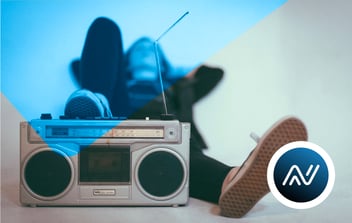Songwriters, the breadwinners behind the curtains
Writing songs is a strongly personal and often organic process of discovery and introspection. The creative journey crosses through various moods, creative notes of inspiration and emotions, until you weave them all into a musical scheme.
Whether you start from a wave of impromptu ideas that write the song almost effortlessly, or you work hard for months and years, going back and forth on a piece, until you finally find the magic combination, the process of songwriting is a very particular and personal process. Where do you begin with? Do you first write the melody or the chord progression? What if you have to build a song around already written lyrics? Would it be easier if you first started with the title? Stream of consciousness is not always the gold key. And you will probably have to go back and rewrite some parts, adjust minor details or change the whole thing up until you get a song with a whole new meaning.
Sometimes you can work in groups, building on each other’s strengths. One co-writer is great in producing melodies, the other takes on the lyrics part where he is stronger. Lyrics have always had high demand in the music industry, so the whole process of songwriting needs to be open and flexible.
Songwriters’ success stories
From member of a psychedelic 80’s band, to $882,700 in songwriting royalties for Adele’s “Someone Like You”, Dan Wilson reached the highest among the top earning songwriters in 2019. From solo music, to bands, production and partnerships with artists like Pink and Dixie Chicks, Wilson states that his creativity stems from both being a songwriter and a performer. “I know a lot of songwriters who’ve never been performers and I just can’t understand that. […] How could a songwriter write songs for people to enjoy without ever having the experience of the feedback and the kind of connection you have from an audience? It’s so instructive. When you play a song live in front of a crowd, you know if it’s right or not.”
On the same track of both performing and writing songs, Dolly Parton is the high low-key writer of “I Will Always Love You” that Whitney Houston deservedly carried on her back. The track reached No1 on the Billboard Hot Country Songs chart twice and saw the great commercial success that is still recognized widely nowadays. Who would have guessed that Dolly Parton had written this song years before finally deciding to sell it to the film “The Bodyguard”? Houston’s version of the song was No1 on the Billboard Hot 100 for 14 whole weeks, and managed to re-enter the charts in 2012 after her death. But Parton has composed more than 3,000 songs overtime! “9 to 5”, and our personal favorite “Jolene”, among all, contributed to an estimated $450 million to Parton’s bank account.
Let’s up our game a tad, shall we? What do The Beatles, “Let It Be”, “Egypt Station” and $800 million have in common? Paul McCartney – the Great – is the answer, and a great example of talent and ownership that comes with a huge career in the music industry.
We’ve saved the best for last, the King of musicals and the one of the very few people to have won an Emmy, Grammy, Oscar, and Tony award. Starting off his career when he was only 15 years old, Andrew Lloyd Webber is recognized as the most successful (and wealthiest, we may say) songwriter in the world. Having faced quite a lot of mixed reviews and failures during his career, Webber holds the baton of success, as his “Phantom of the Opera”, “Jesus Christ Superstar” and “Cats”, contributed to a total $1,2 billion in net worth. That’s right, it’s billion with a big fat B!
Right. But how do songwriters actually make money?
We know, it’s time to cut to the chase.
Generally speaking, there are a lot of factors that regulate the amount of money songwriters are getting paid for. The format of the song, the manufactured copies, the number of digital streams it gets, whether it is performed live, or if it appears in a film, an ad or even a videogame, are some of these components. At this point, Music Royalties make an appearance, and here at ANote Music, we know the “Music Royalties” case backwards and forwards.
So, songwriters can get paid royalties. Each time a song gets played, used or performed, it generates royalties, that people can then collect and profit from. We have four main potential sources of royalty revenue in the music industry:
1. Mechanical Royalties
Mechanical Royalties are generated every time a copyrighted unit in a physical form (ex. CD, cassette, vinyl) is sold or manufactured. During this digitalization era, mechanical royalties stay relevant in the form of Digital Download Royalties and Streaming Mechanical Royalties. To give you an example, a songwriter gets paid a mechanical royalty every time a CD of his music is sold. The rates are more or less the same either we’re talking about physical sales or downloads: In the US we can estimate around $9,1 cents per reproduction of a song, whereas outside the US the rate is 8-10 percent and differs from country to country.
2. Public Performance Royalties
Public Performance Royalties come from royalties generated for copyrighted works that are performed in public. Whether it is on the radio, on a plane, a bar, a club or a live concert, a song that gets played in public generates and pays royalties to songwriters. A recent add to this list is streaming, nowadays one of the most promising source of royalties for creators. These royalties are getting collected by PROs (Performance Rights Organizations) in a non-fixed rate, and then get re-distributed to the songwriter.
3. Synchronization Fees
Sync Fees are the royalties that get generated when a copyrighted song is licensed for visual media use, such as for a TV show, a YouTube video, an advertisement etc. This fee is freely negotiated in the marketplace based on various elements. Is the song well-known? How well-known? Is the artist well-known? How much? Where is the show aired? What is the budget of the production? How long will they use the song? How will they use it? All these factors form these sync fees. But that’s not it. Even when a song is licensed for a certain use, it can still continue to get reproduced and, therefore, generate mechanical royalties on top of the sync fees. One race for two records!
4. Print Royalties
Print Royalties somewhat lost their glory nowadays. This type of royalties are generated from copyrighted music that gets translated onto printed materials, as guitar tabs, sheet music or choir arrangements. These royalty rate is also fluid and open for negotiation between all the involved parties.
Whether a songwriter is also a performer or not, one thing is sure: there is a good amount of music royalties to be earned. However, when you think about all the different kind of royalties and the time it takes for one to see earnings in their bank account, it sounds quite complex and messy, right? That exactly was our thought and idea too. At ANote Music we want to open up this world, make the process more transparent, fair and public while giving all the songwriters and artists out there the chance to get access to funds quicker. You can visit temp.anotemusic.com if you want to dive into more details.
What could be Andrew Lloyd Webber’s net worth now, if ANote Music existed back then as well?



